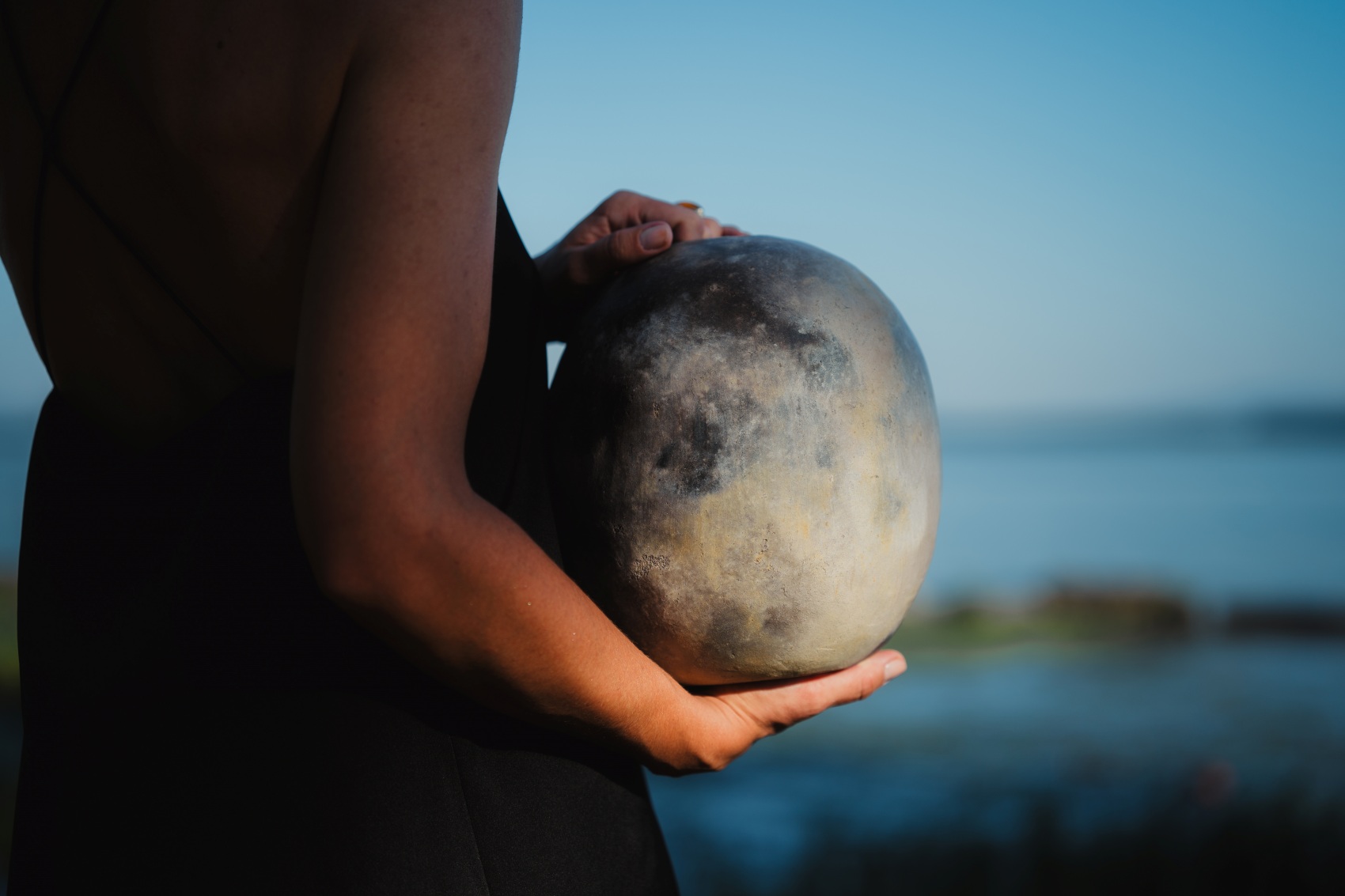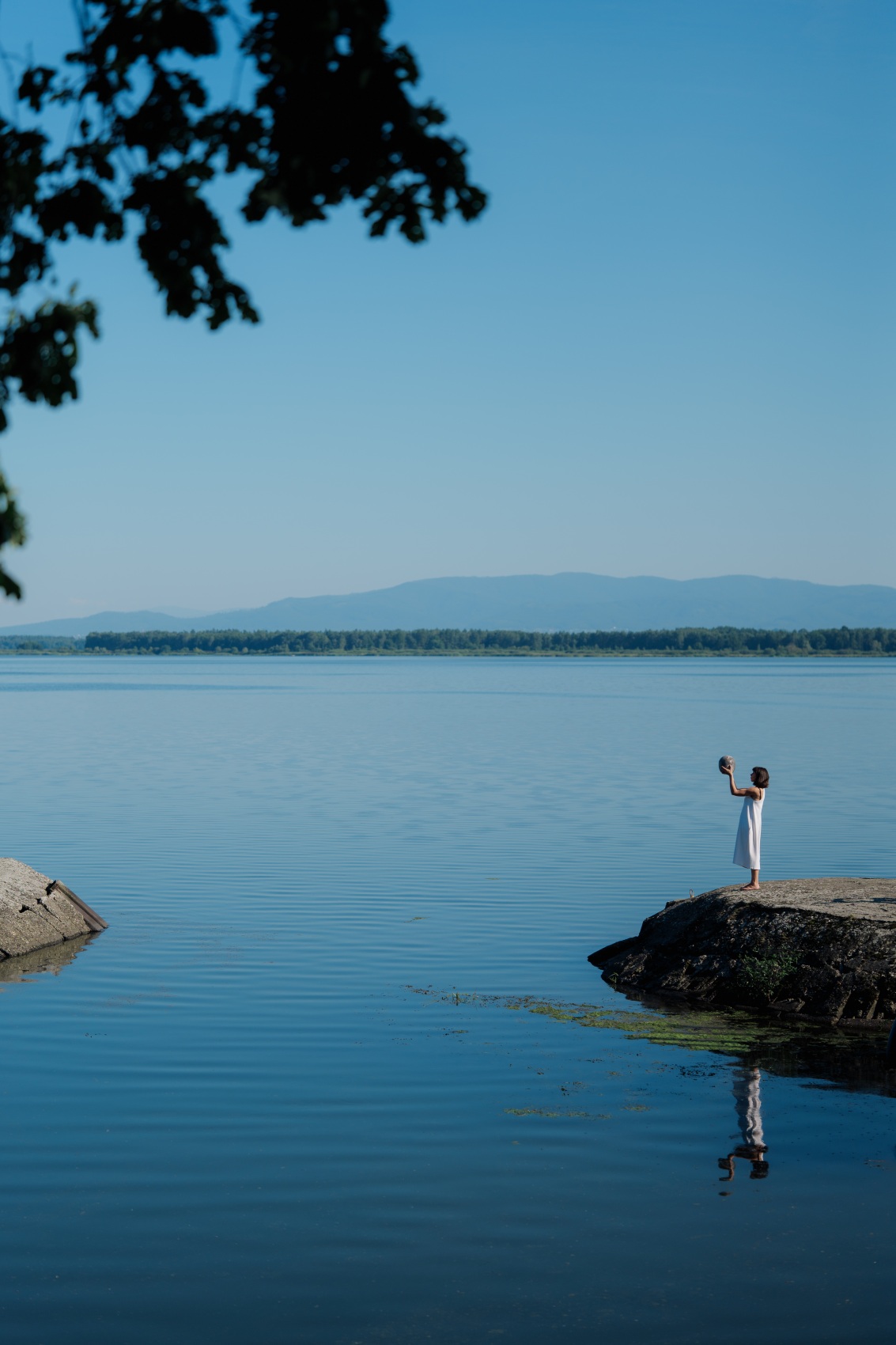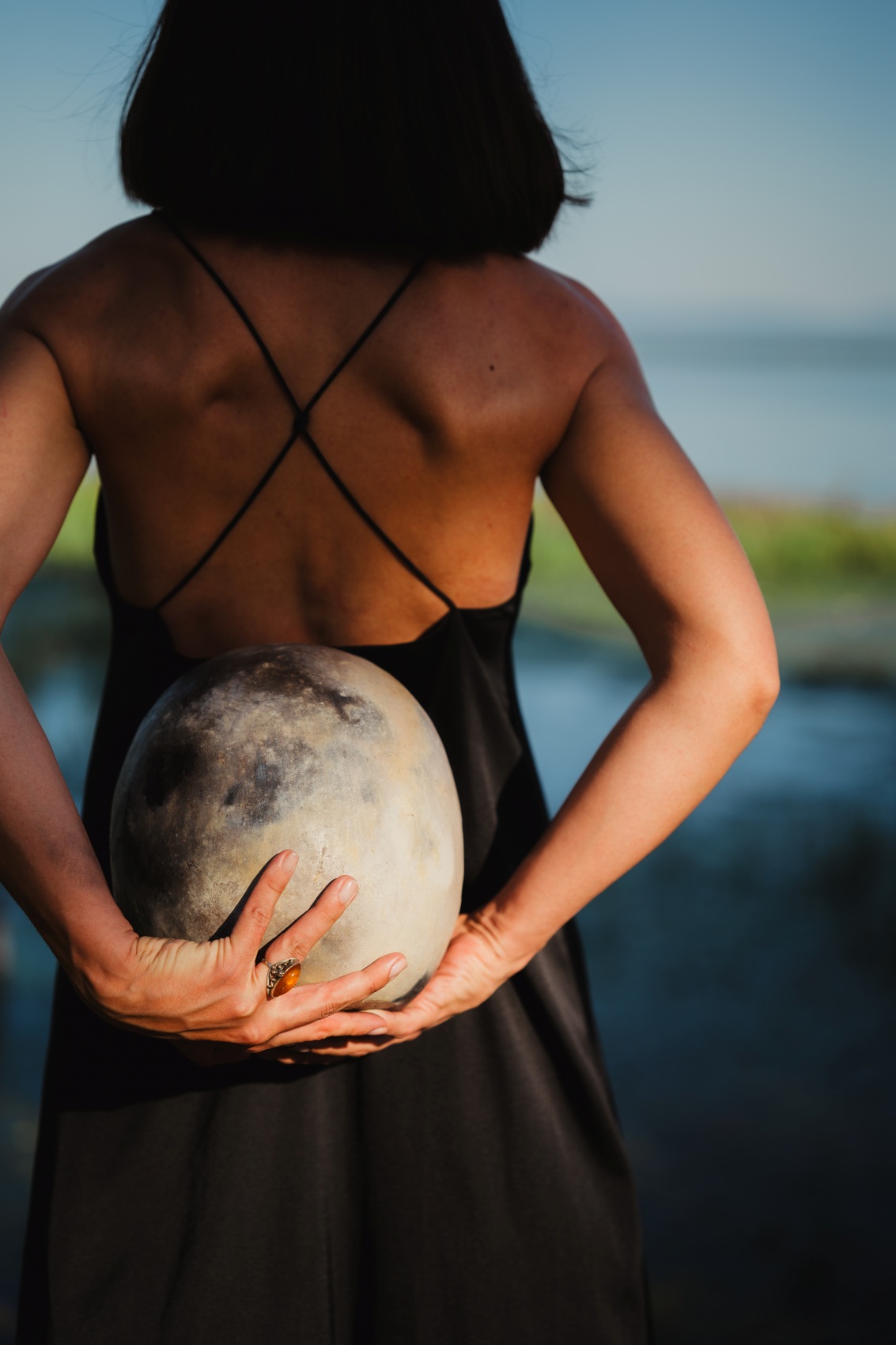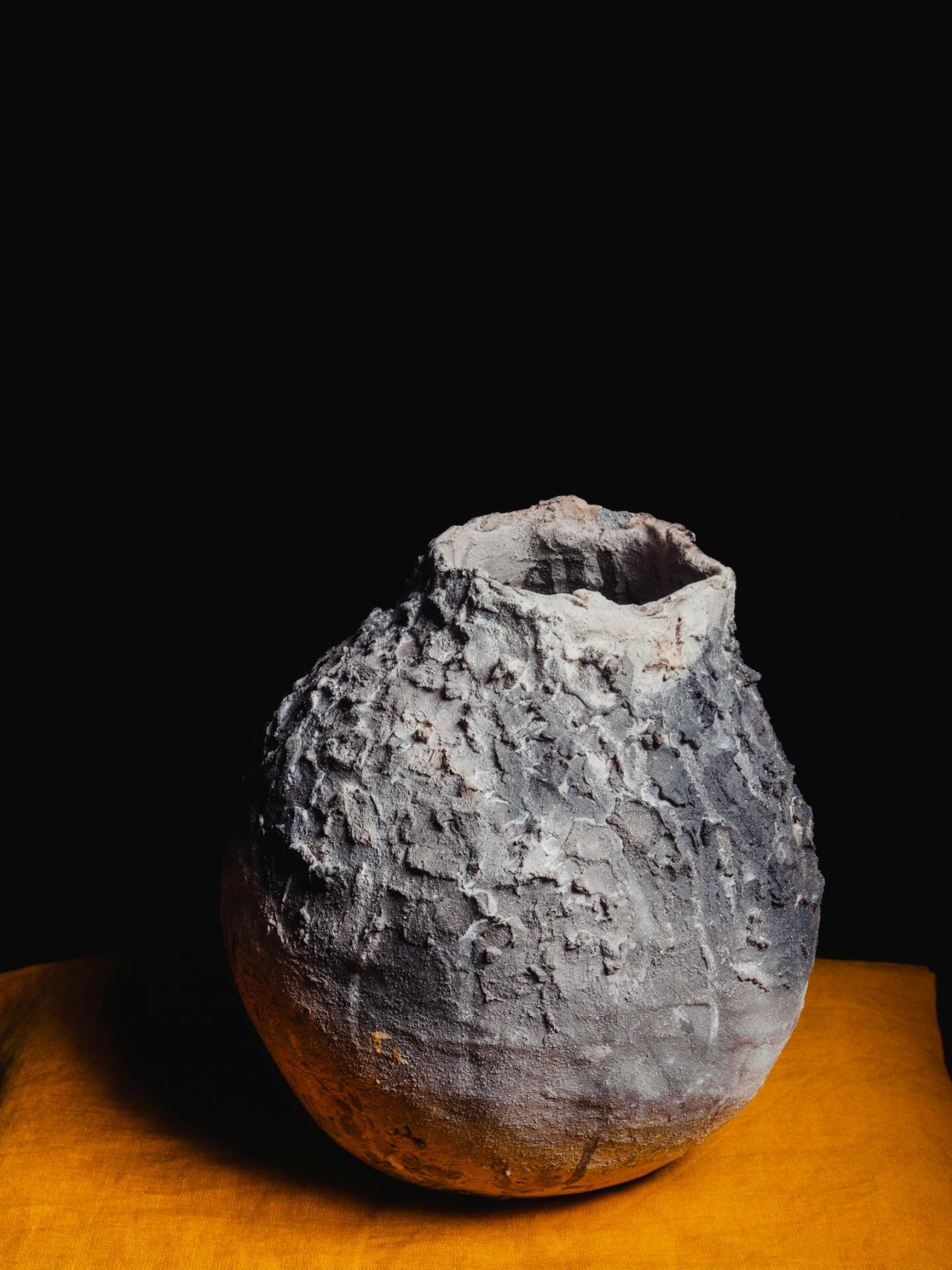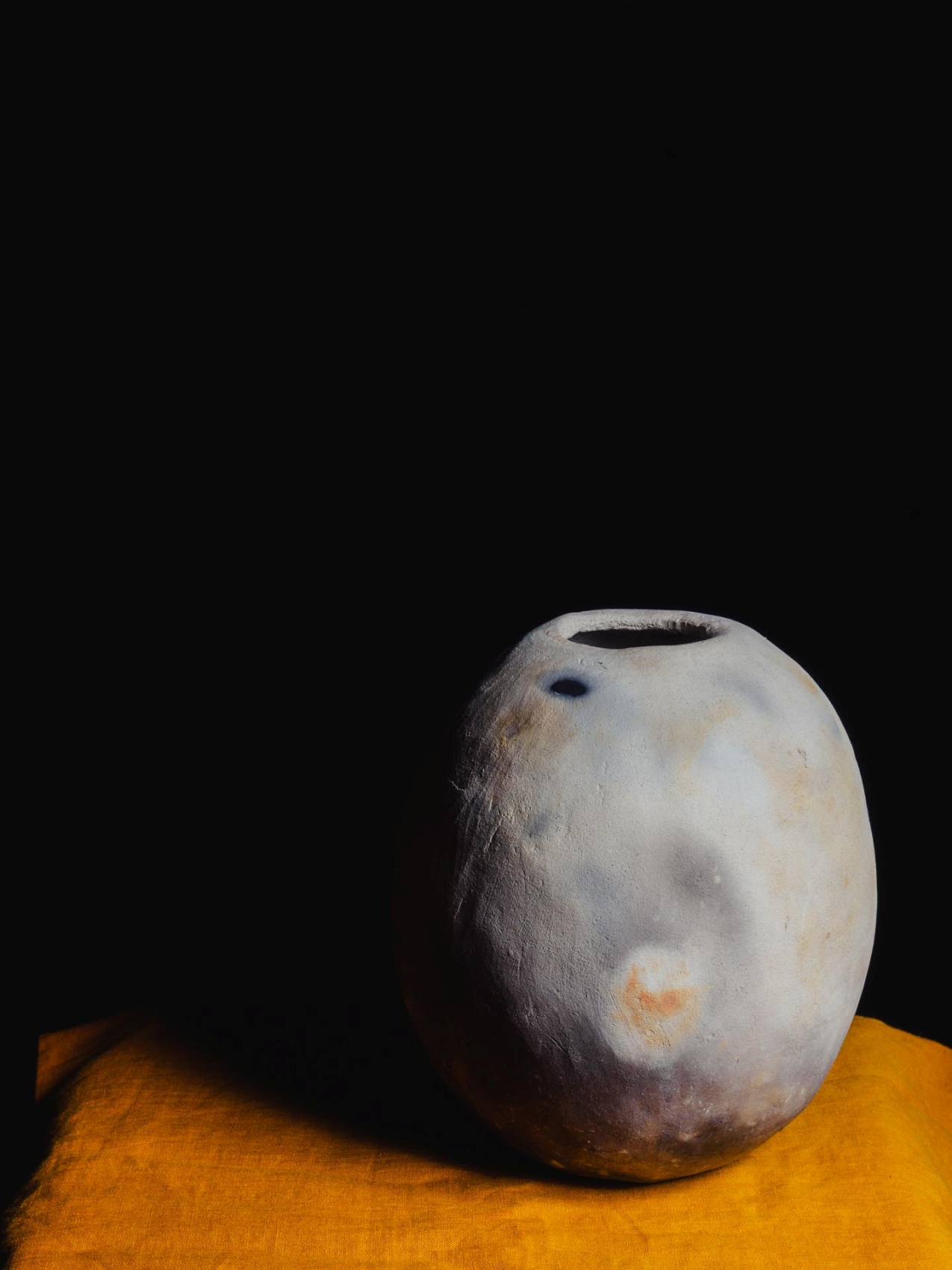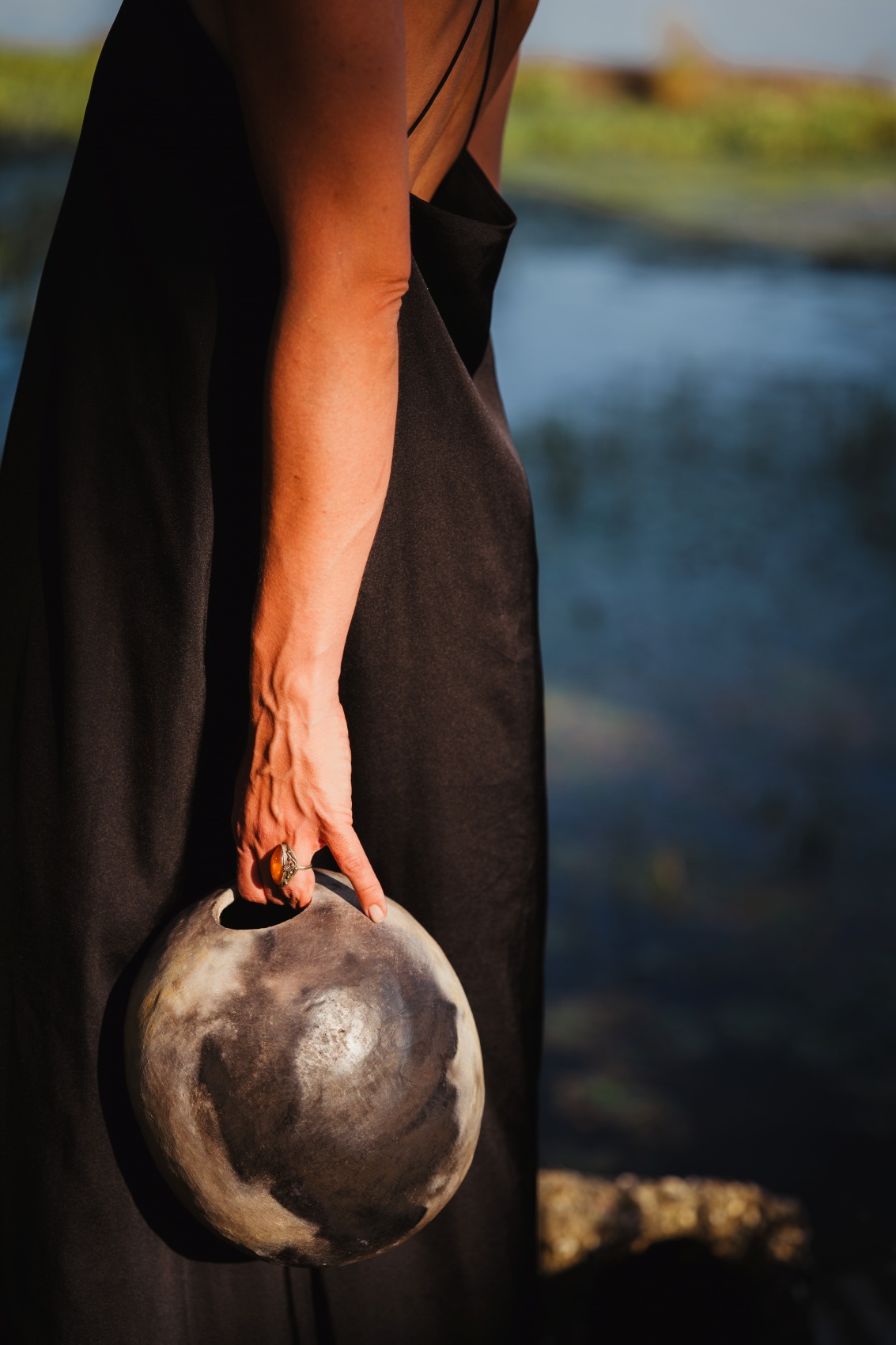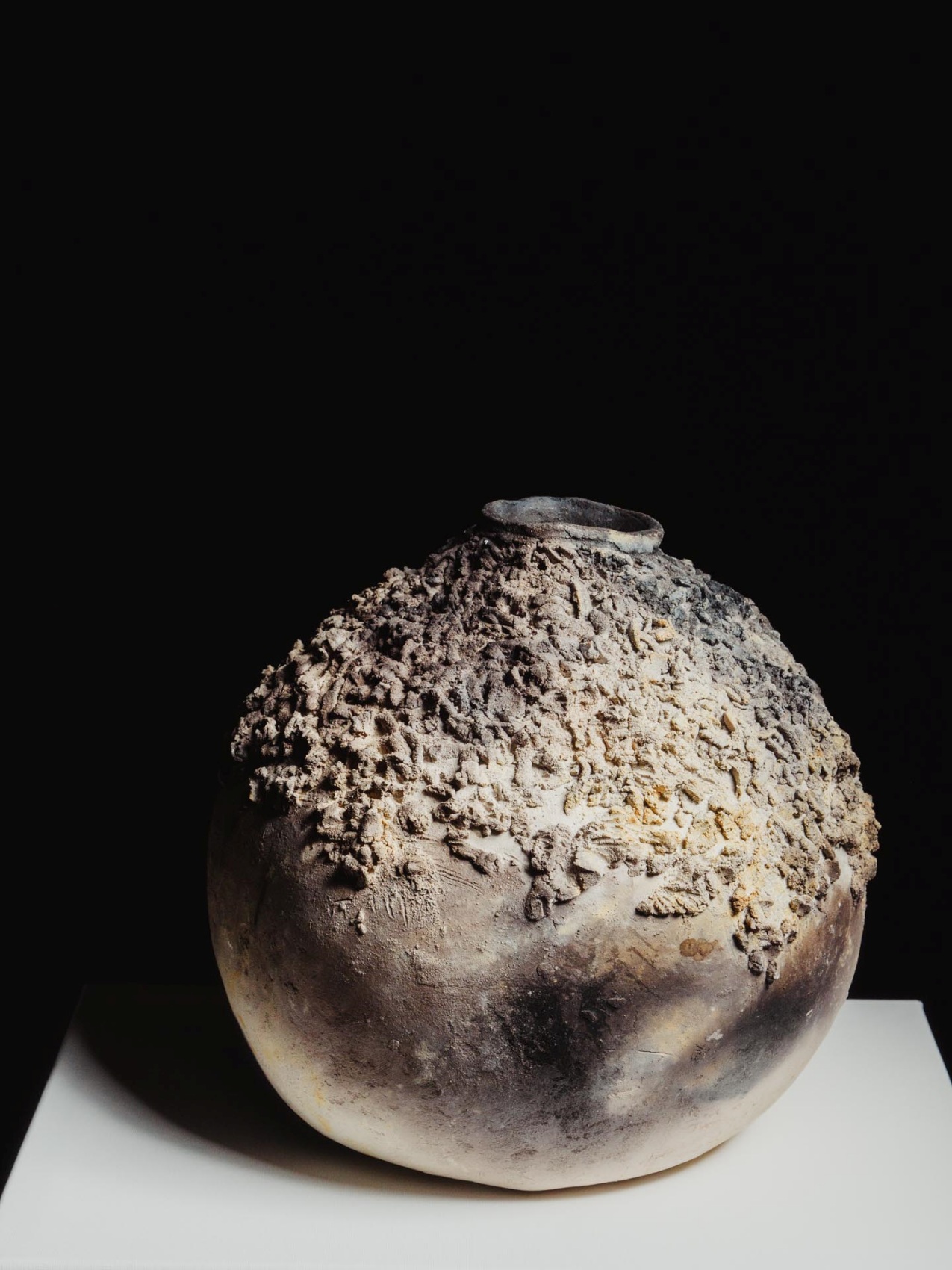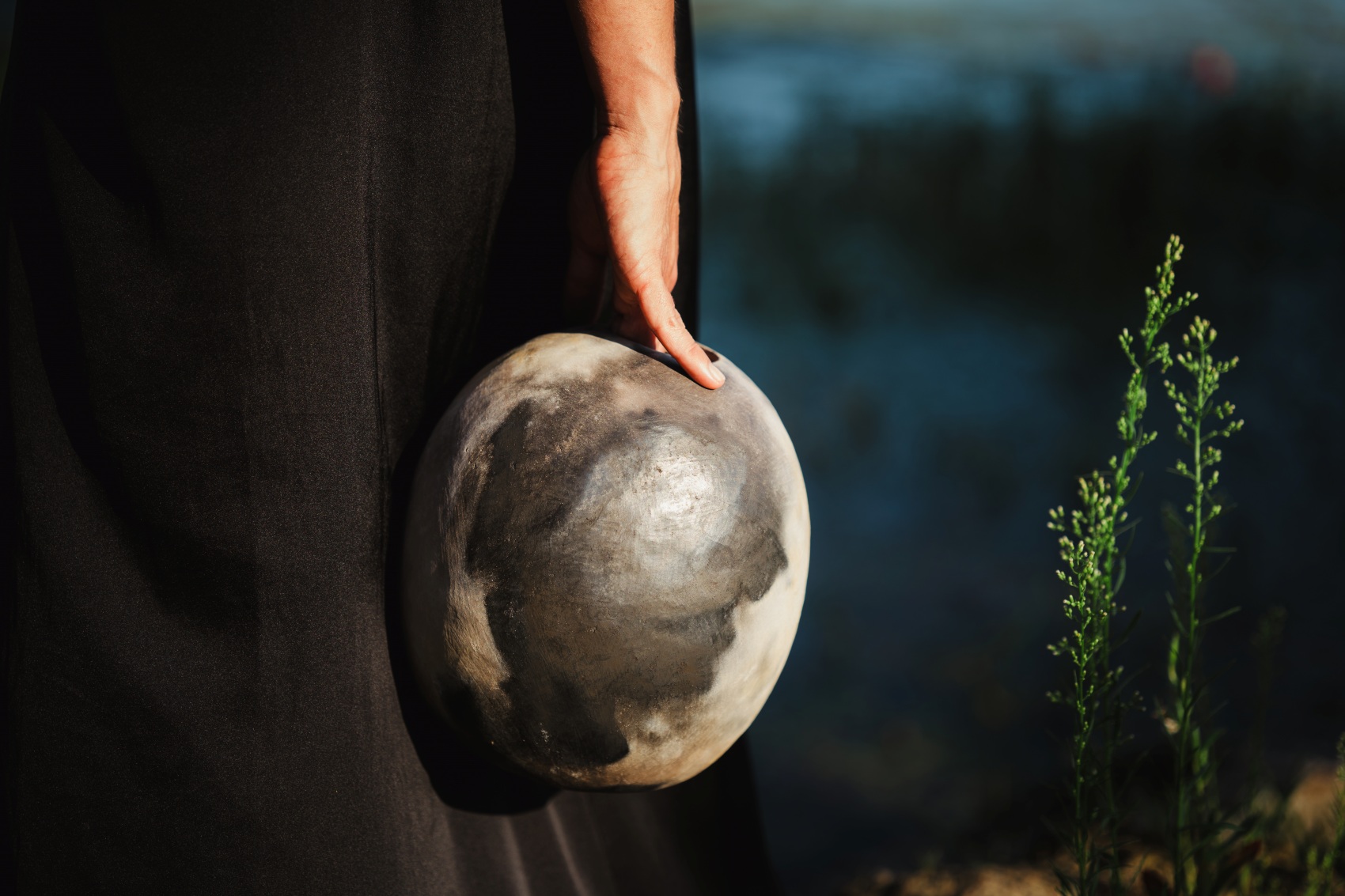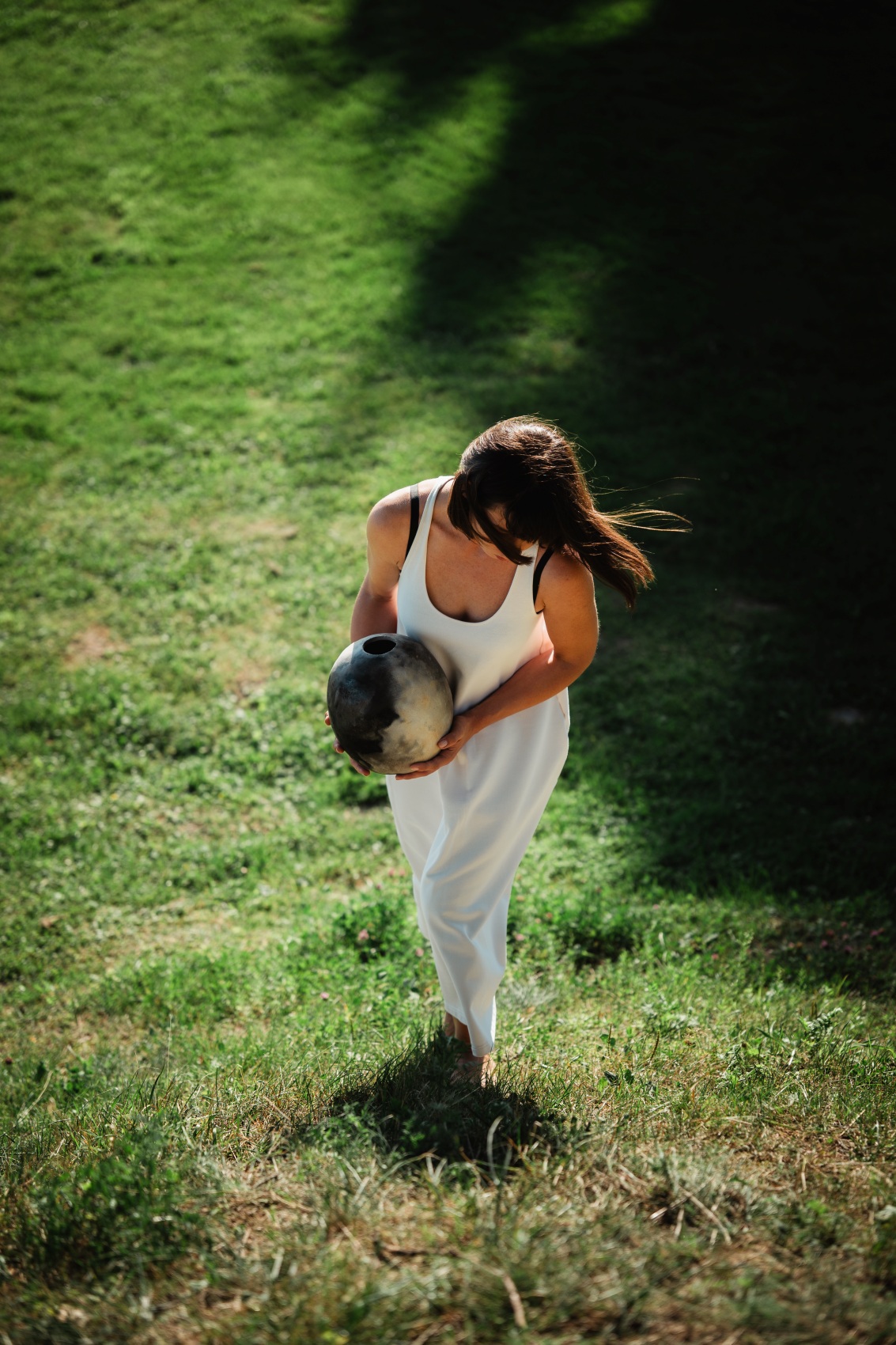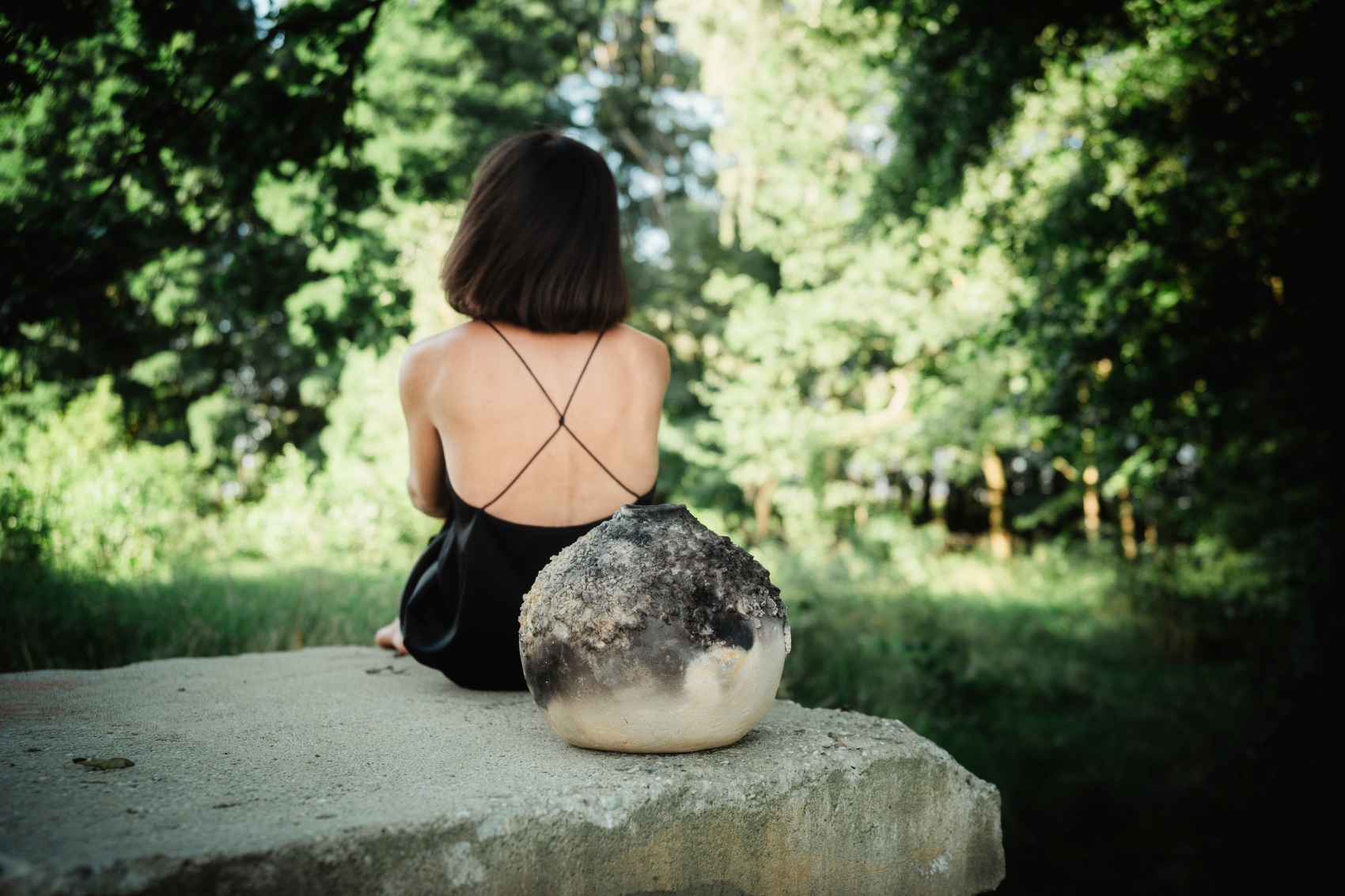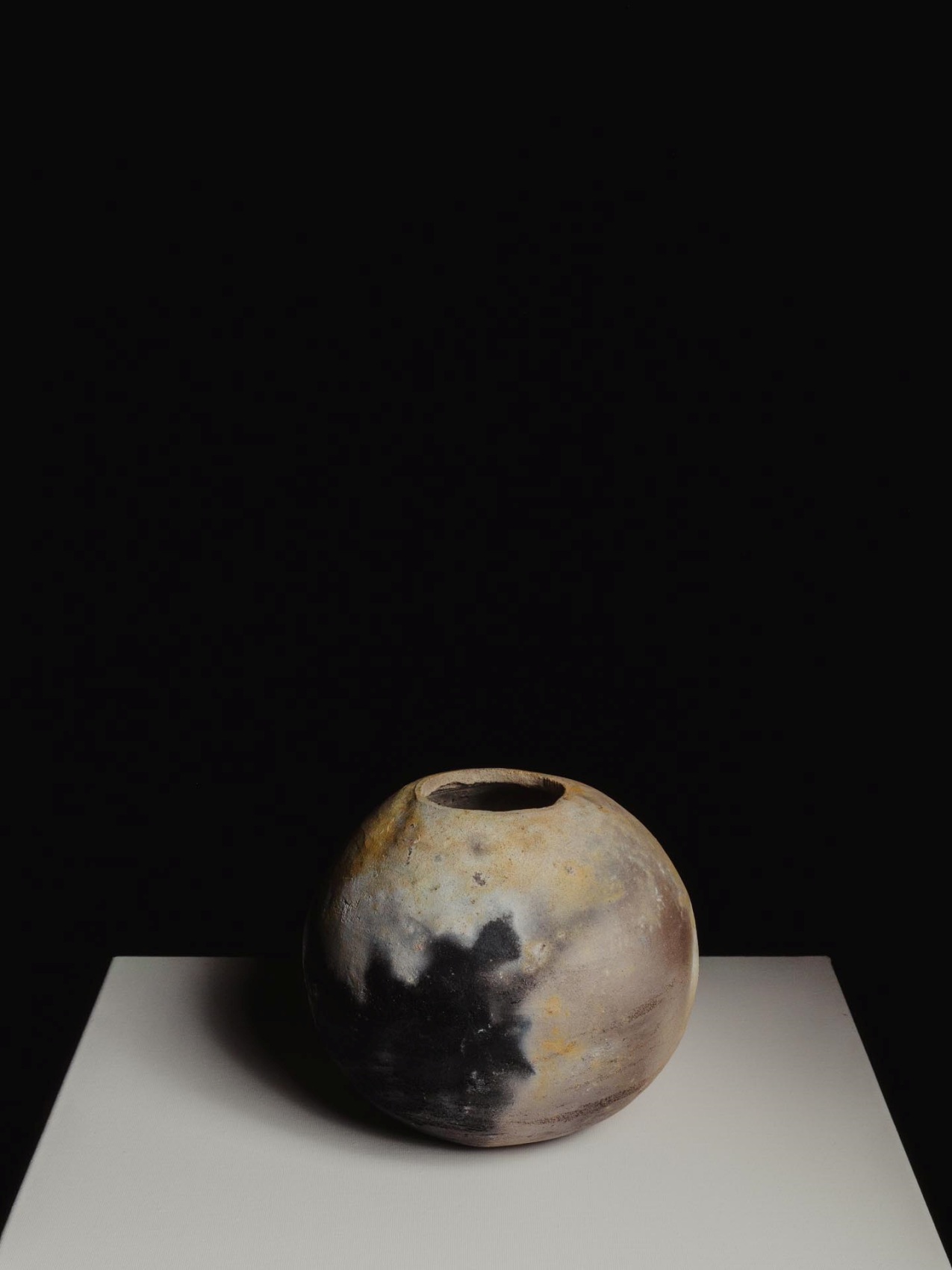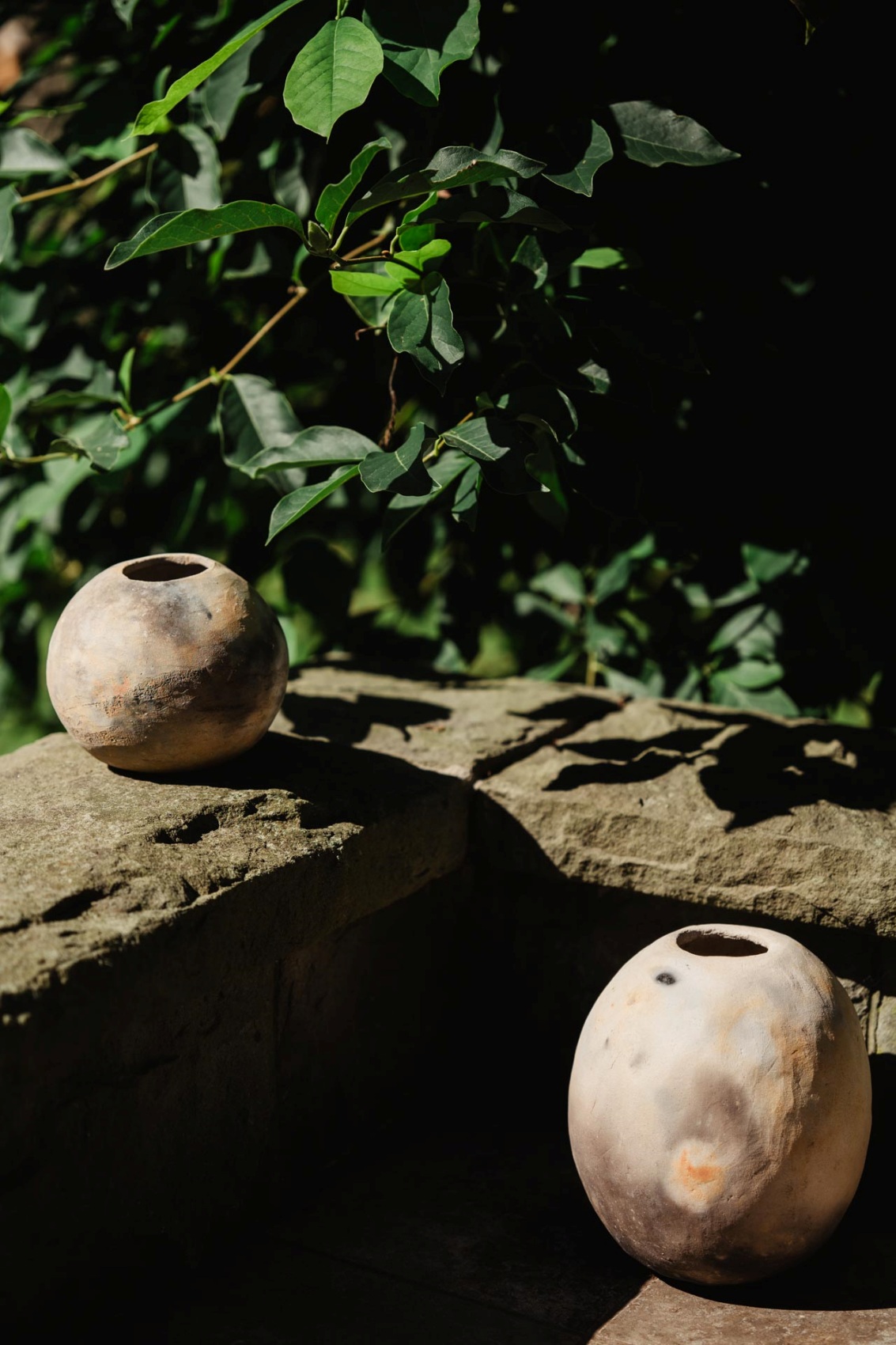The Celestial Bodies series are ceramic objects that were created through the process of firing in the ground in a pit kiln. This is the oldest method of firing ceramics, which was already used in prehistoric times. In this way, Anna Milczanowska creates spheres reminiscent of craters on the moon, which exemplify activity at the interface between craft and the elements.
In the beginning, it was a passion. I slowly entered the world of ceramics creating larger and larger forms and looking for my space. I didn’t have a potter’s wheel or a kiln for firing ceramics in my studio. So I was looking for another way to create large objects. That’s why I finally dug my first hole in the ground and lit a large fire. This is how NULA came into being,” explains Anna Milczanowska.
The power of fire
What does it look like to create ceramic works using the traditional method? The artist forms all her works from superimposed rolls of clay, the way they were created before the invention of the potter’s wheel. She then digs holes more than a metre deep by hand, lining them with wood. The smoke created during the firing process gives the clay its unusual colouring and causes the effect of the colours of the earth to intermingle. The result is ceramic objects in which applied art is combined with sculpture.
Man and nature
NULA ceramics are characterised by austerity, primordial simplicity and the natural and therefore noble colours of the earth from which it was born. The surface of the vessels is uneven – rough in some places and shiny and reflective in others. The effect of a velvety-to-the-touch surface is achieved by smoothing the clay with a small stone.
Each vessel is an experiment and its colouring after removal from the ash is always a surprise. Thedecorative effect – the interpenetrating stains on the surface of the object – is unpredictable, depending on the supply of oxygen and smoke, the artist explains.
The process of burning the vessels in the ground and in the fire takes several hours. Then, immersed in the ash and embers, the vessels slowly cool down. The whole process takes more than 16 hours. The raw material used by the artist is clay obtained in Lower Silesia. Important elements in the artist’s creative process are the need to come to terms with the impossibility of controlling the elements, the need to keep the fire burning, to constantly be present during the firing, and to surrender the final result of her work to nature. As a result, each object is unique and a joint creation of man and nature. The smell is also an important aspect; although the artist has no control over the smell, as the vessels are brushed and washed, often when putting your nose to the objects you can smell the delicate aroma of the fire. This is an asset – we activate another sense.
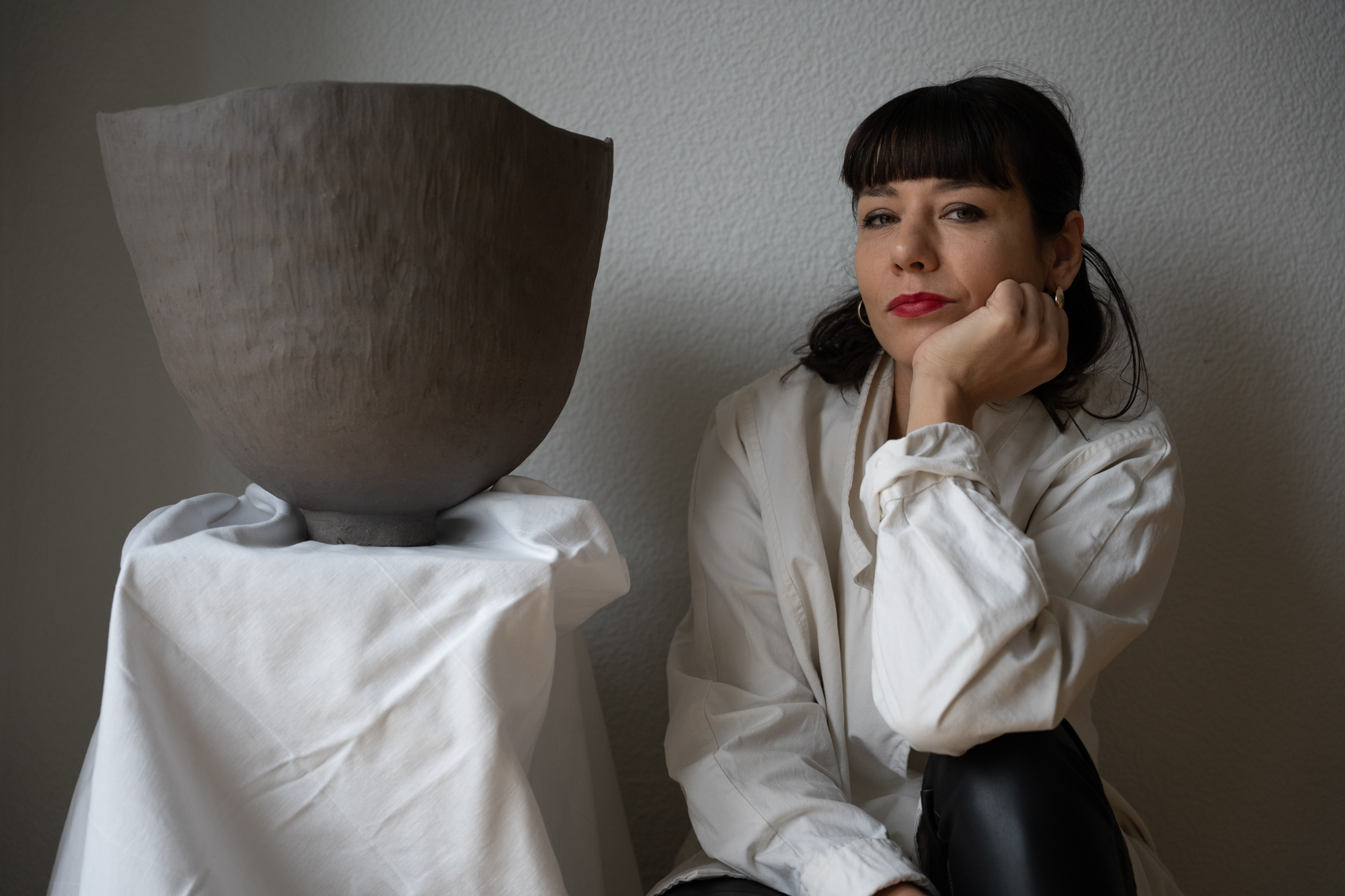
The art of patience
Why does the artist not use modern electric cookers? Anna Milczanowska frankly admits that it involves costs. Large dishes require the purchase of a large oven, and the artist could not afford this.
There was a moment when I wanted to give up. However, it turned out that what seemed to me to be the biggest limitation was at the same time a door to a whole new world. I’m glad I didn’t give up. As aresult, today I can create large objects with natural colours, which, moreover, cannot be predicted or planned,” concludes Anna Milczanowska.
NULA is a negation of mass production. Each object has its own signature and date of creation of a particular piece. Since the artist is not limited by the size of the firing kiln, this gives her ample opportunity to create to special order. Ceramics can be ordered through the website www.nula.art.
Anna Milczanowska, founder of the NULA brand – works in sculpture, ceramic sculpture and artistic textiles. She is also a cultural animator and manager. She is the author of exhibition concepts, social campaigns, articles on contemporary art and literature. She has received a scholarship from the Ministry of Science and Higher Education. She learned ceramics in the studios of Żaneta Christow-Jezierska and Justyna Skowyrska-Górska, and artistic textiles under the supervision of Jagoda Krajewska. She runs her own studio in Saska Kępa in Warsaw. She collaborates with architects and interior photographers.
photo: Paweł Świątek
source: www.nula.art
Read also: Art | Ceramics | Detail | Interesting facts | whiteMAD on Instagram

